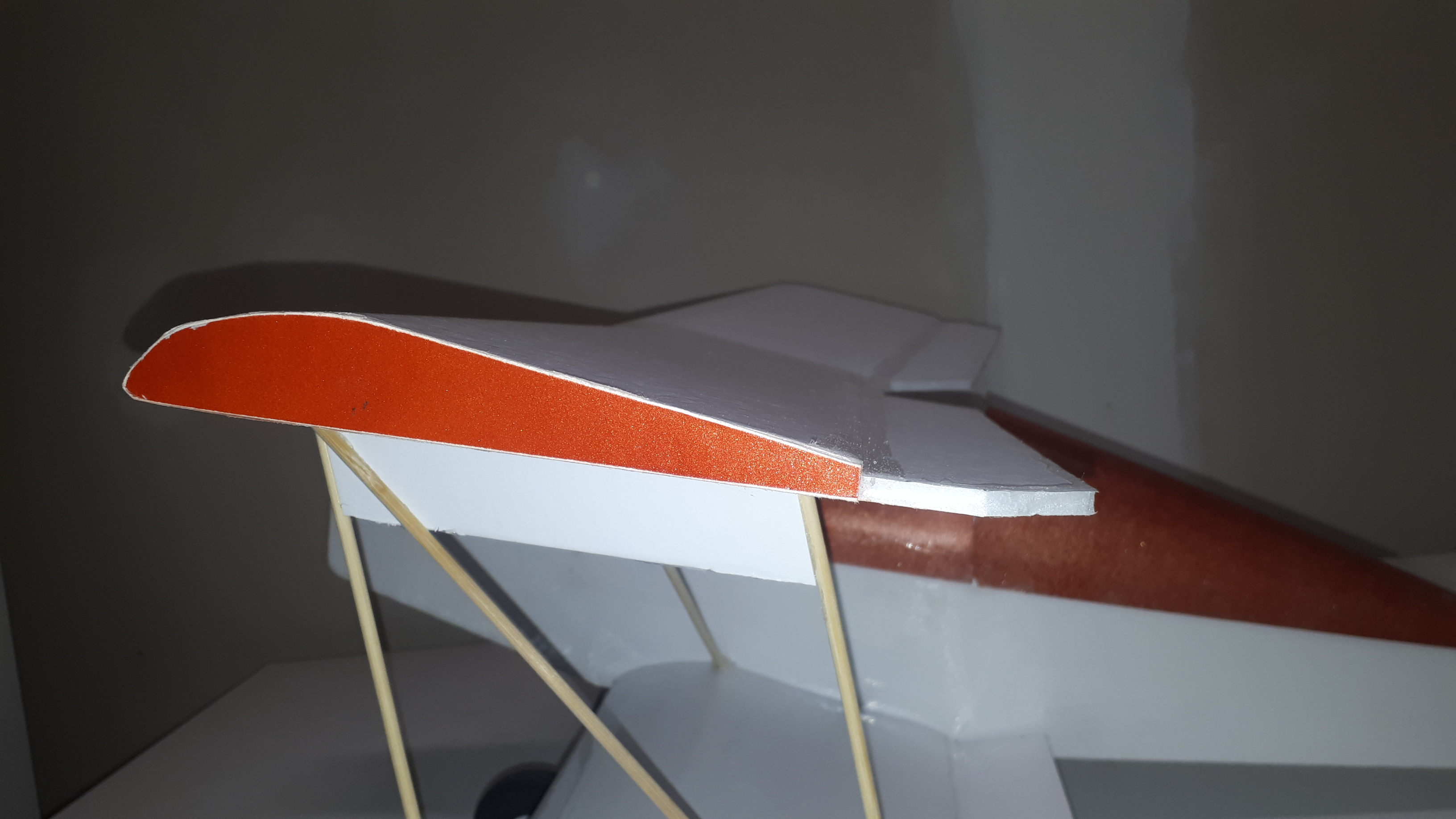BATTLEAXE
Legendary member
Something I have noticed with the folded airfoil design is that most FT models and forum beta builds go with a folded airfoil that folds the top wing panel over the spar and connects at the training edge with the remaining UPPER wing panel creating the control surface for the ailerons/elevons/flaperons. This design lends itself to making the control surface to have a high AOA given the angle of the top panel of the wing sloping down to the TE. I can see how this would greater increase lift by 1. further slows down the air traveling under the wing in the pocket created in the connection of where the upper and lower wing panels meet, (even more when a spacer is used between the joint), 2. the increased AOA gives more inherent lift from the rush of air pushing against the surface. Both points work off both the Newtonian and Bernoulli principles of how an airfoil works. Pic shows what I am talking about:

Now I have flown both this wing design and the under camber wing design you will find with the Mini Scout, Mini Speedster, SE5, and on all these planes whether it is the folded airfoil or the under camber style I have noticed that when you increase throttle from level flight that the plane will increase its lift respectively, causing you to re-trim or manually use down elevator input to maintain said level flight on the pitch axis, some more then others.
In building the Baby Blender I realized the wing TE is made from the LOWER wing panel to create the ailerons/elevons/flaperons style of control surfaces:

As you may have guessed here lies my question. Does the latter airfoil style lend itself to a more consistent level flight in various throttle settings as compared to the first pic or does it even matter? Either by theory or practical experience all comments and responses are welcome, and if there is an airfoil design that is more consistent that hasn't been mentioned here please let me know. This one has me scratching my brain box.
Thanks for reading

Now I have flown both this wing design and the under camber wing design you will find with the Mini Scout, Mini Speedster, SE5, and on all these planes whether it is the folded airfoil or the under camber style I have noticed that when you increase throttle from level flight that the plane will increase its lift respectively, causing you to re-trim or manually use down elevator input to maintain said level flight on the pitch axis, some more then others.
In building the Baby Blender I realized the wing TE is made from the LOWER wing panel to create the ailerons/elevons/flaperons style of control surfaces:

As you may have guessed here lies my question. Does the latter airfoil style lend itself to a more consistent level flight in various throttle settings as compared to the first pic or does it even matter? Either by theory or practical experience all comments and responses are welcome, and if there is an airfoil design that is more consistent that hasn't been mentioned here please let me know. This one has me scratching my brain box.
Thanks for reading


